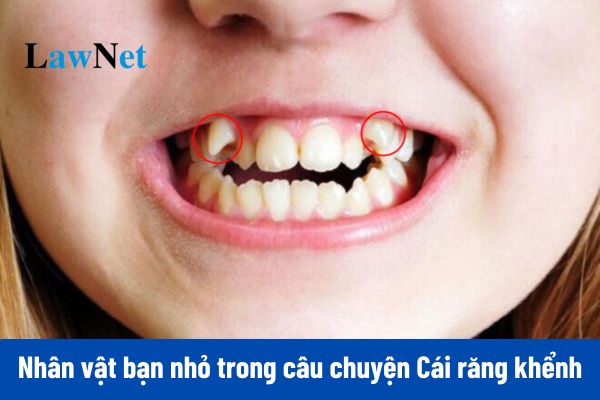What are the sample paragraphs showing thoughts on the child in the story "Cái răng khểnh" under the 4th-grade Vietnamese Language curriculum?
What are the sample paragraphs showing thoughts on the child in the story "Cái răng khểnh" under the 4th-grade Vietnamese Language curriculum?
Students can refer to the following sample paragraphs showing thoughts on the child in the story "Cái răng khểnh" under the 4th-grade Vietnamese Language curriculum:
| Sample 1 In a child's mind, there are countless things they wish to explore and understand. However, guiding children to explore with purpose and efficiency is no simple task. Adults need to provide lessons and explanations to steer children toward the most appropriate things. The young character in the story "Cái răng khểnh" is no different. Curious about their own crooked tooth, the boy feared it would make him look unattractive when smiling. But when his father explained: “Your smile is different from your friends'. You should be proud of that. Everyone has a unique feature. Observe, and you'll discover many secrets about those around you.” This statement from the father helps us appreciate our own value, and consequently, appreciate the value of others. |
| Sample 2 The young character in the story "Cái răng khểnh" learned to overcome his insecurity, turning his own imperfections into a secret unique to himself. From feeling embarrassed about the disliked crooked tooth, he grew confident to smile and show his teeth daily. Despite being at an age of growing, he learned how to turn others' imperfections into compassion, expressing empathy and sharing with those around him with all his heart, with the sincerest emotions that come straight from a tender heart. |
| Sample 3 Reading the story "Cái răng khểnh", I really like the young character with the crooked tooth. Previously, that crooked tooth made him constantly self-conscious about his appearance, as none around him had one. Worse, friends often teased that it was the result of him being lazy about brushing teeth, which made him very sad. However, after confiding in his dad, he completely changed his mindset. He realized that the crooked tooth was his distinctive feature, a little secret only he had. It made him special and unique among many boys out there. From that day on, he was no longer shy about his unique trait. He even shared this secret with his teacher. This detail shows he completely stepped out of the realm of insecurity, officially integrating with others with his unique trait. His confidence and optimism endear him to me. |
| Sample 4 The young character in the story "Cái răng khểnh" is an adorable boy with thoughts about his crooked tooth. He felt very self-conscious when teased by friends about it. This became a knot in his heart that made him smile less. Confiding in his father made him less insecure. He considered it his own secret. Sharing this secret with his teacher made him happier because he had another person to keep his secret. That crooked tooth will be a cherished memory for him. |
| Sample 5 Initially, the boy in the story "Cái răng khểnh" did not like his crooked tooth, fearing teasing from friends, so he rarely smiled. After a conversation with his father, he realized that everyone has their own “unique feature,” a secret that constitutes their charm. No longer feeling inferior, he became confident in his smile and was willing to share his secret with his teacher. The endearing aspect of this young boy is his ability to quickly absorb and change his perception after his father's explanation, learning to appreciate his distinctive characteristics. |
Note: The information is for reference only!

What are the sample paragraphs showing thoughts on the child in the story "Cái răng khểnh" under the 4th-grade Vietnamese Language curriculum? (Image from the Internet)
What are the objectives of teaching 4th-grade Vietnamese Language?
According to sub-section 2 of Section 3 in the General Education Program for Literature subject issued together with Circular 32/2018/TT-BGDDT, the objectives of teaching 4th-grade Vietnamese Language are as follows:
- Help students develop and form essential qualities with specific traits such as love for nature, family, and homeland; consciousness of their roots; appreciation for beauty and virtue and having healthy emotions; enthusiasm for learning, a passion for work; honesty in study and life; awareness of personal, family, social, and environmental responsibilities.
- Assist students in initially forming general competencies, developing language proficiency across all skills including reading, writing, speaking, and listening at a basic level: reading accurately and fluently; understanding the content and main information of texts; making connections and comparisons outside the text; writing correctly in spelling and grammar; constructing some sentences, paragraphs, and short compositions (mainly narrative and descriptive essays); speaking clearly; and understanding the speaker's message.
Develop literary capabilities with the requirement to distinguish poetry from stories, know how to read poetry and stories; recognize the beauty of artistic language; have an imagination, and understanding, and feel touched by the beauty and virtue of humanity and the surrounding world manifested through literary texts.
What are the policies regarding educational universalization or illiteracy eradication at the primary level in Vietnam?
The policies regarding universalization of primary education according to Article 2 of Decree 20/2014/ND-CP are as follows:
- The State gives the priority to the investment and creates favorable conditions for educational establishments of the national educational system to implement the educational universalization or illiteracy eradication; encourages and creates favorable conditions for international organizations, foreigners and oversea Vietnamese to participate in educational universalization or illiteracy eradication in Vietnam under regulations of law.
- The State implements the support policy to the people subject to reduction or exemption from school fees and support to learning costs when participating in the prescribed programs of educational universalization or illiteracy eradication.
- Individuals participating in organization, management, teaching ...to carry out the educational universalization or illiteracy eradication shall receive the remuneration as prescribed by the State.

